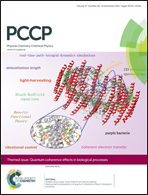High-performance formaldehyde gas-sensors based on three dimensional center-hollow ZnO†
Abstract
Three dimensional (3D) center-hollow ZnO architectures assembled by nanoparticles have been successfully fabricated on a large scale via a template-free method using an oil bath. The samples were characterized by X-ray diffraction, scanning electron microscopy, transmission electron microscopy, Brunauer–Emmett–Teller specific surface area, surface photocurrent and UV-Vis diffuse reflectance spectroscopy. The photoelectric gas-sensing results demonstrated that the 3D porous, center-hollow ZnO structures exhibited excellent sensitivity and good selectivity to formaldehyde under 365 nm light irradiation at room temperature. The gas response to 1 ppm formaldehyde can reach 70%, which is superior to the results reported in the literature, indicating that the 3D center-hollow ZnO architectures are ideal candidate materials for photoelectric gas sensors. The underlying mechanisms responsible for the high sensitivity and selectivity to formaldehyde are discussed, which provide a new pathway for designing novel VOC sensors. Moreover, the facile method presented in this paper has the advantage of low-cost and high-yield, which is suitable for the practical production processes.


 Please wait while we load your content...
Please wait while we load your content...